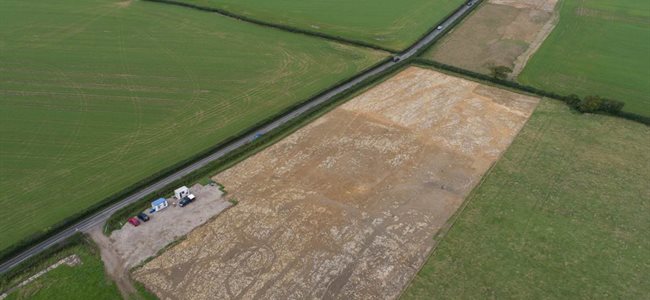SMR 15
This area was stripped in three phases where Rubicon identified numerous, complex, intercutting and overlapping ditches, post-built structures, ring ditches and three distinct metal working areas.

Trace of buried Roman soil layer masking earlier features including:
-
- Roman field systems with associated enclosures
-
- Earlier Iron Age settlement with round houses and field system
-
- Roman Metalworking site including the discovery of clay lining to a furnace and blacksmithing evidence
-